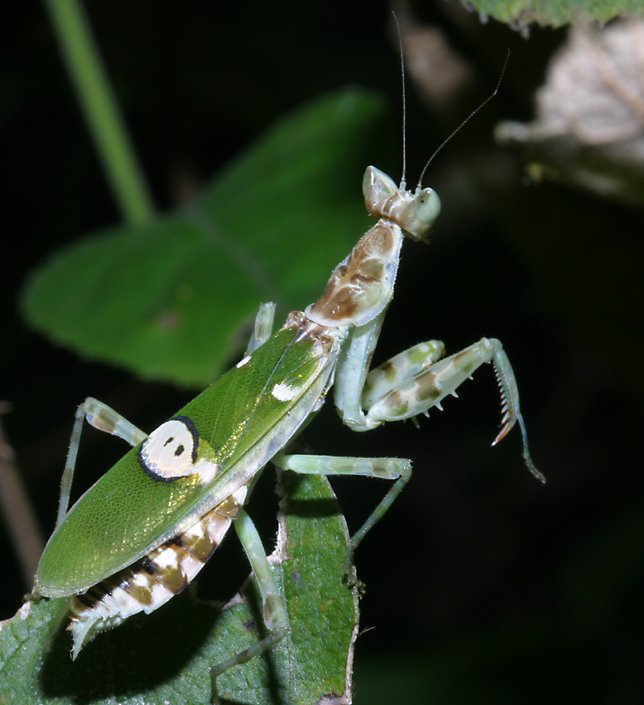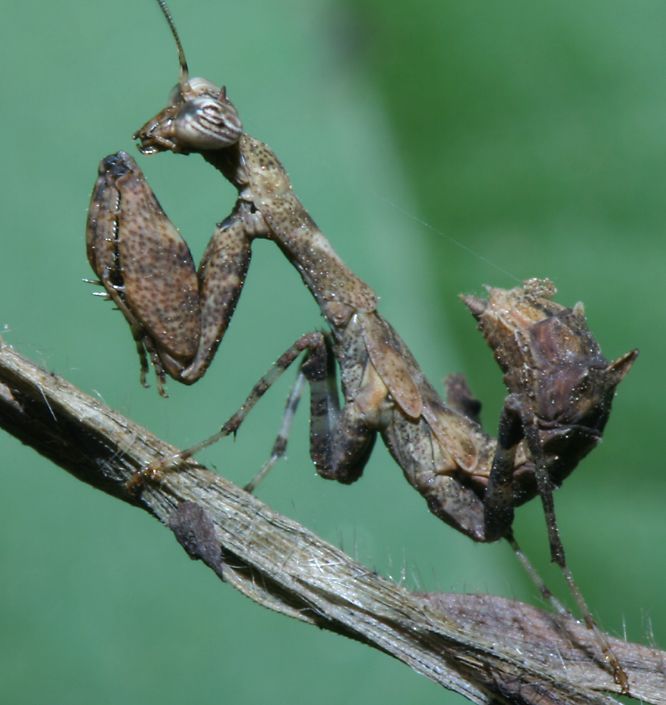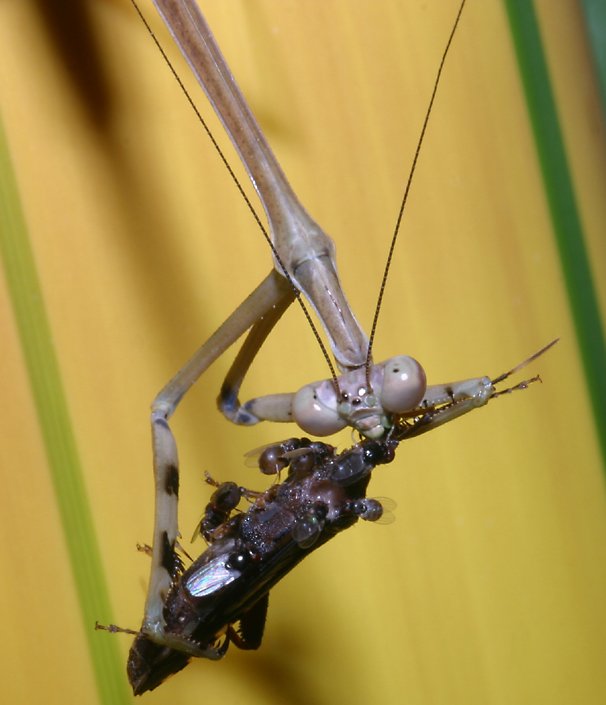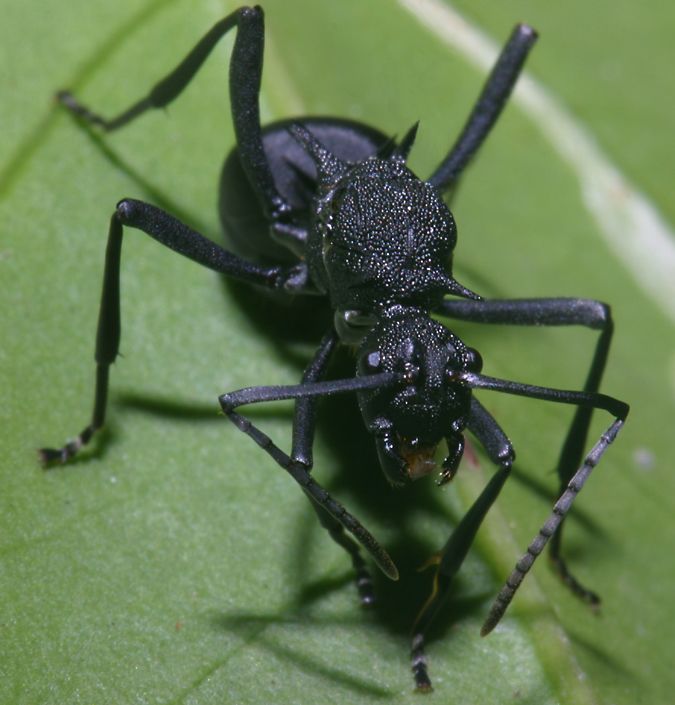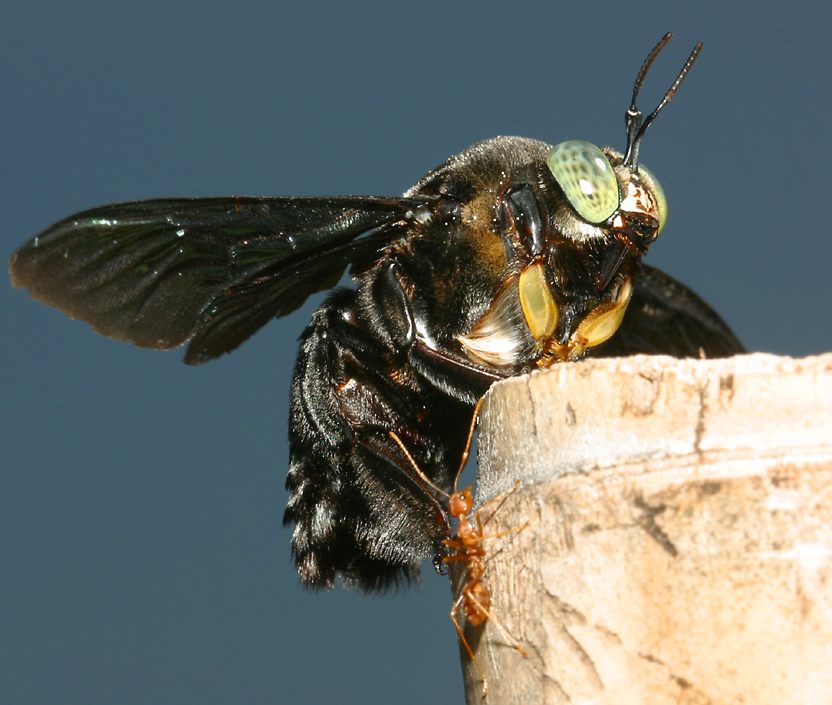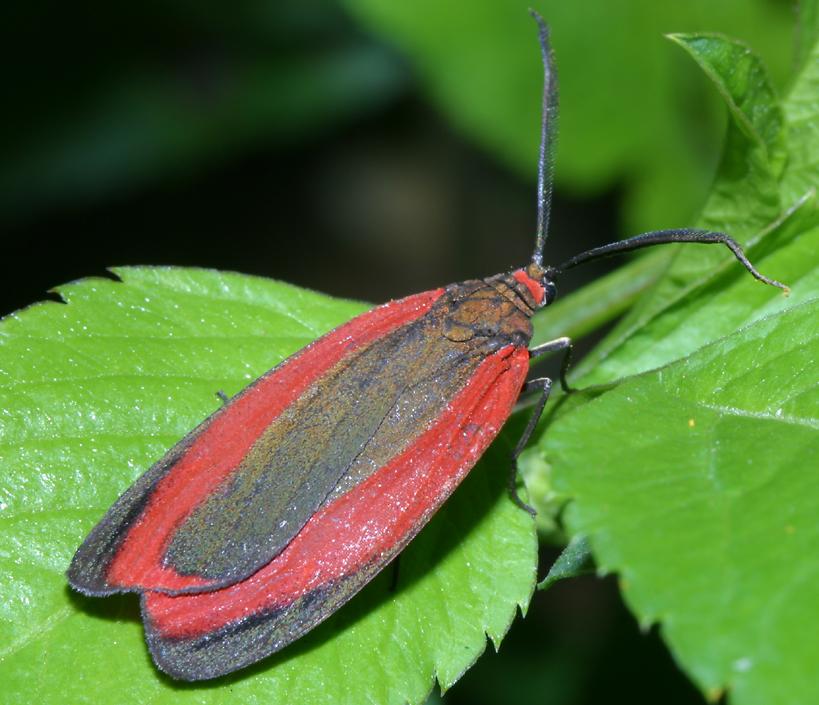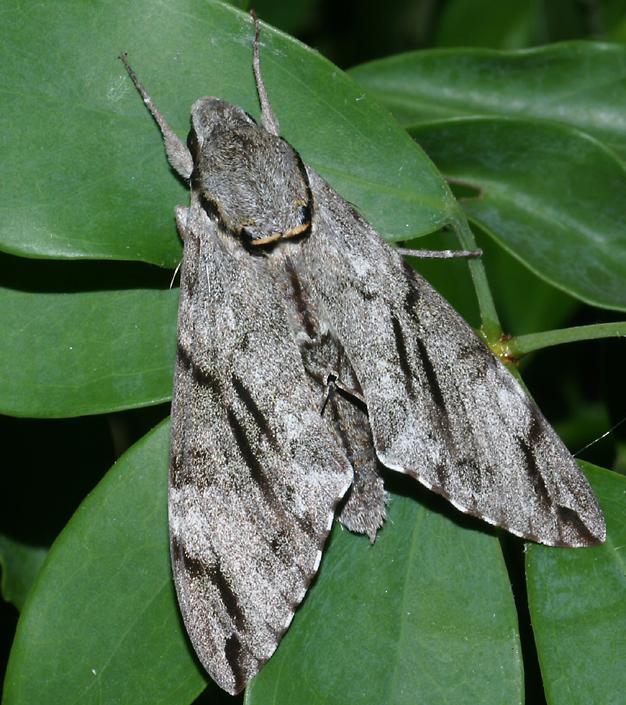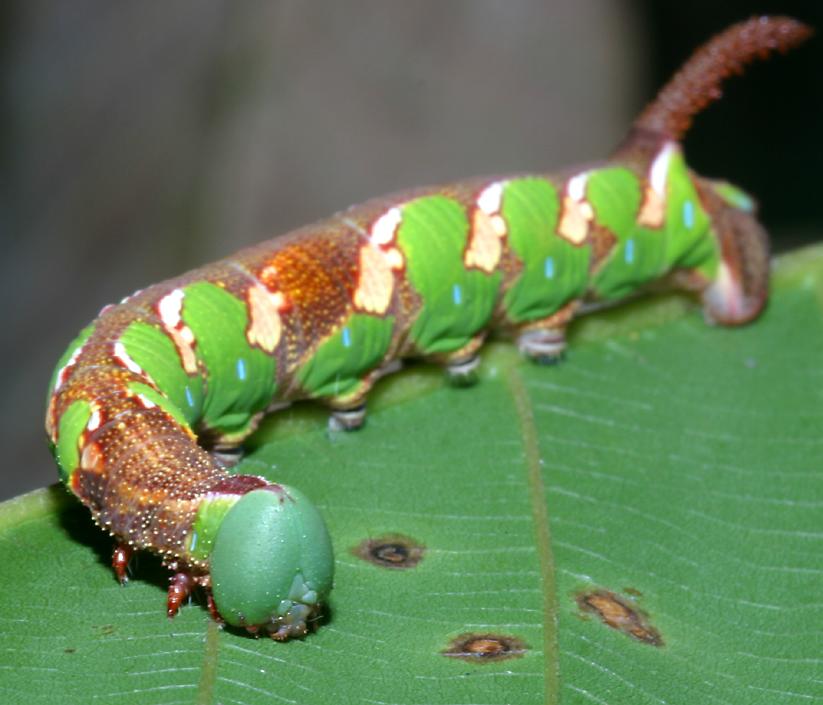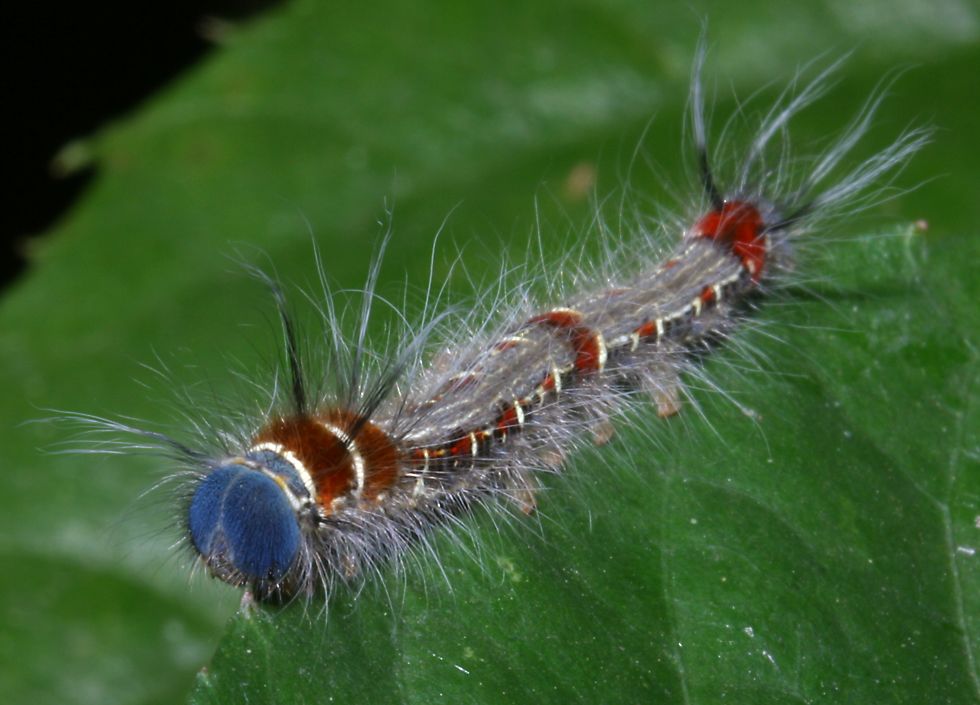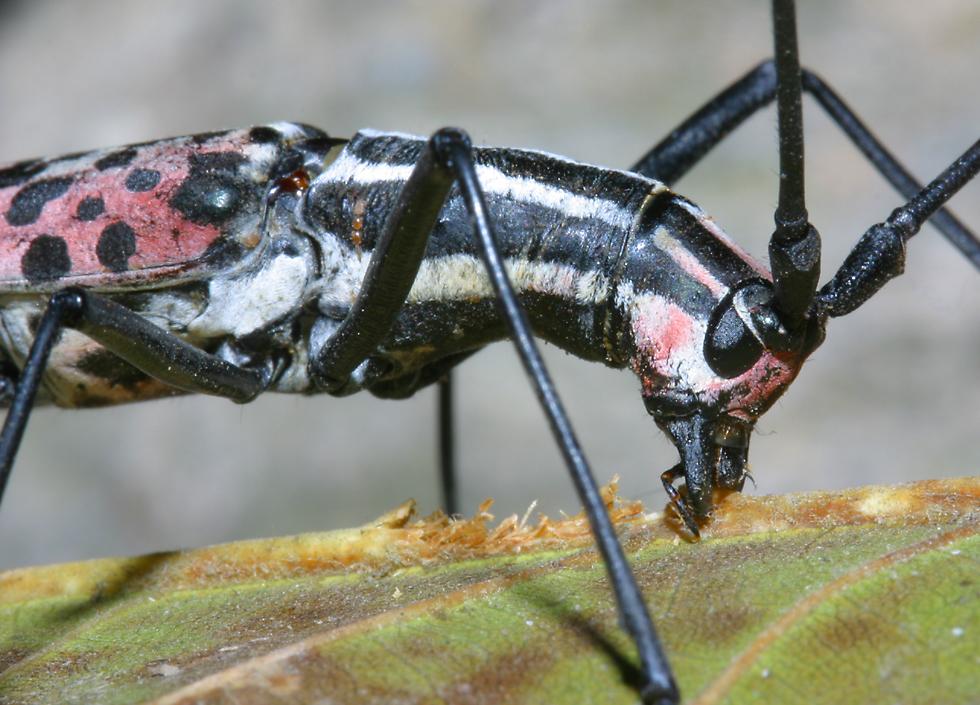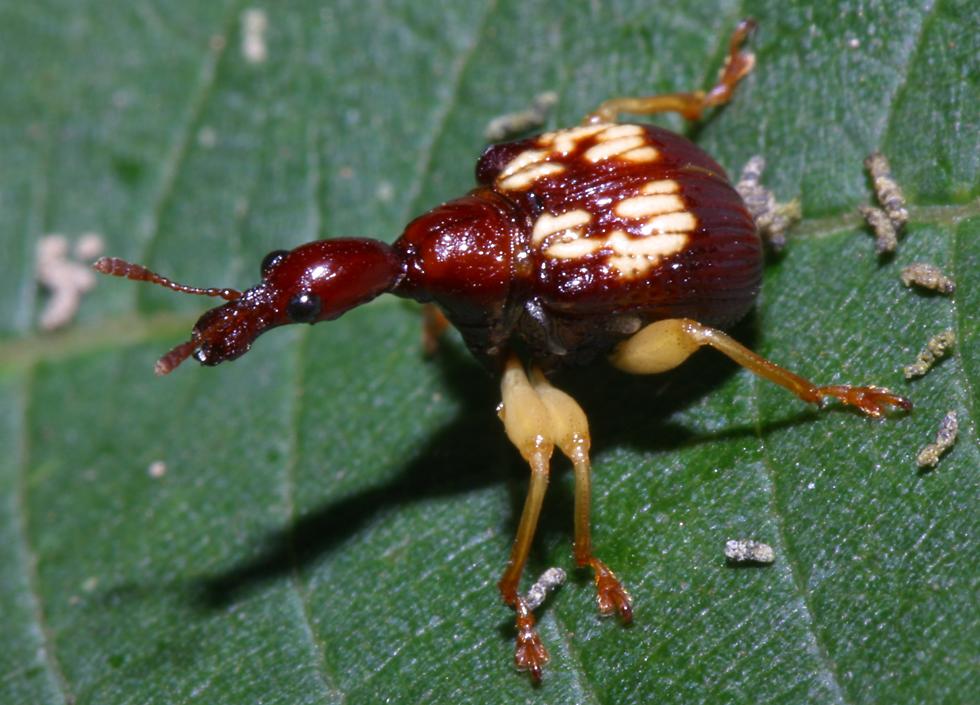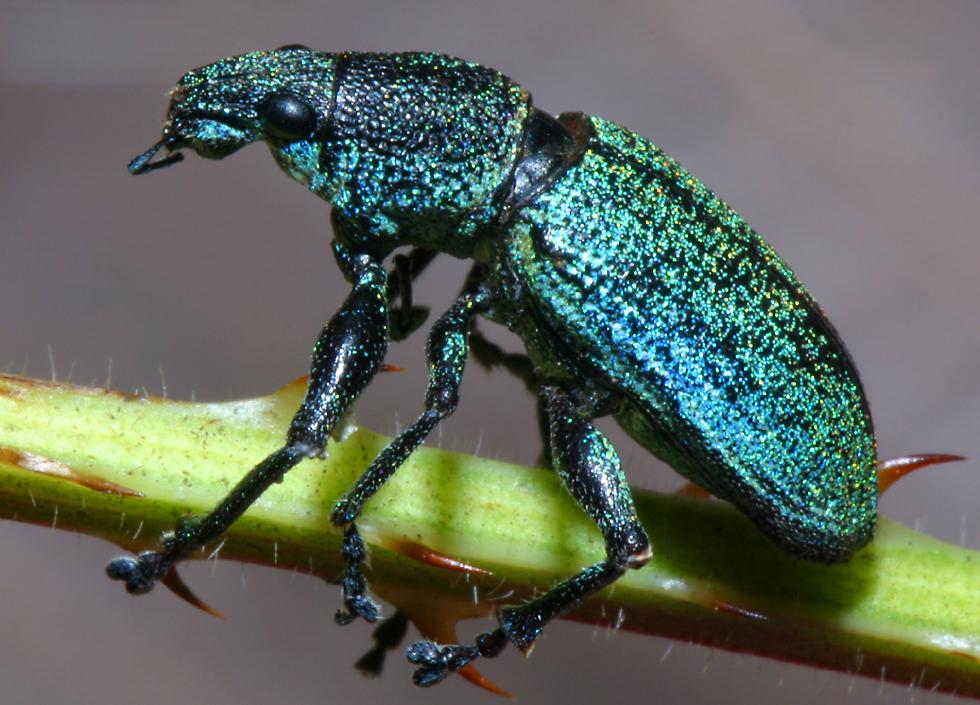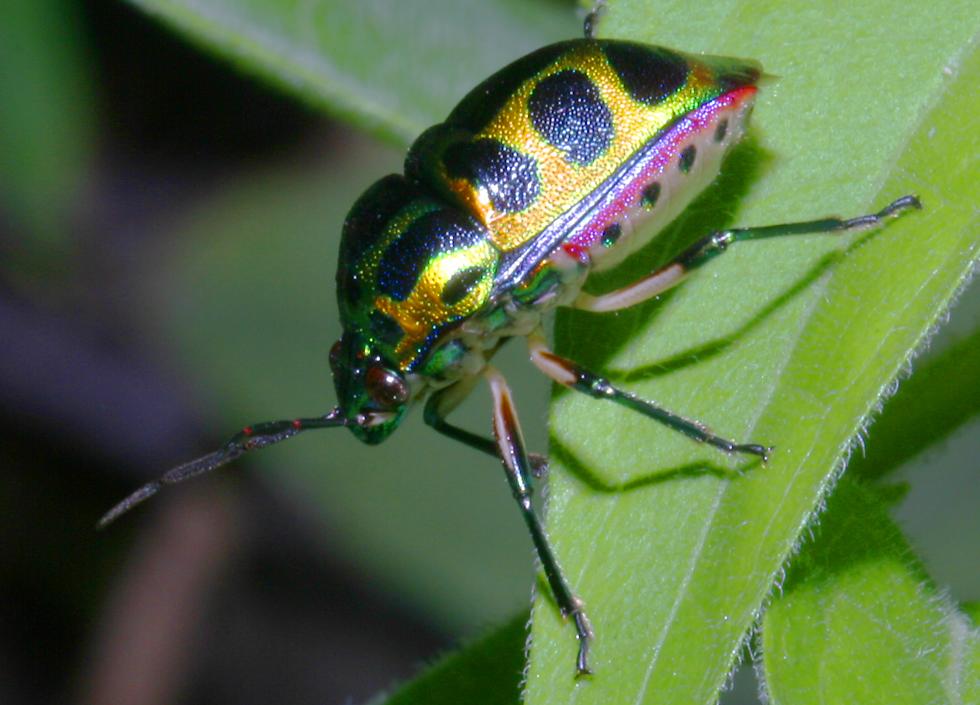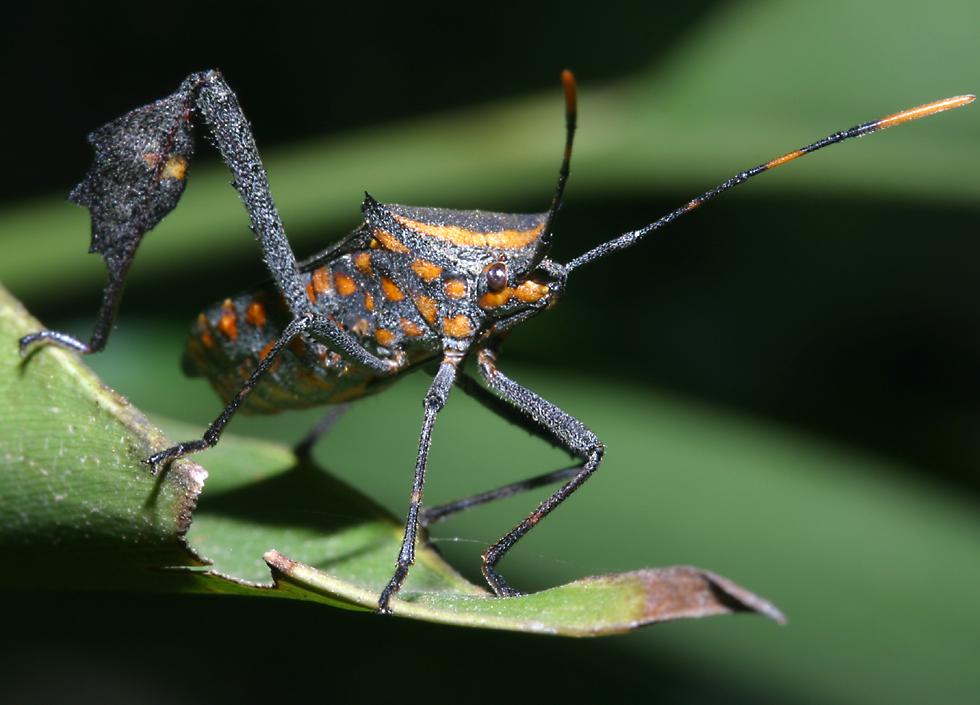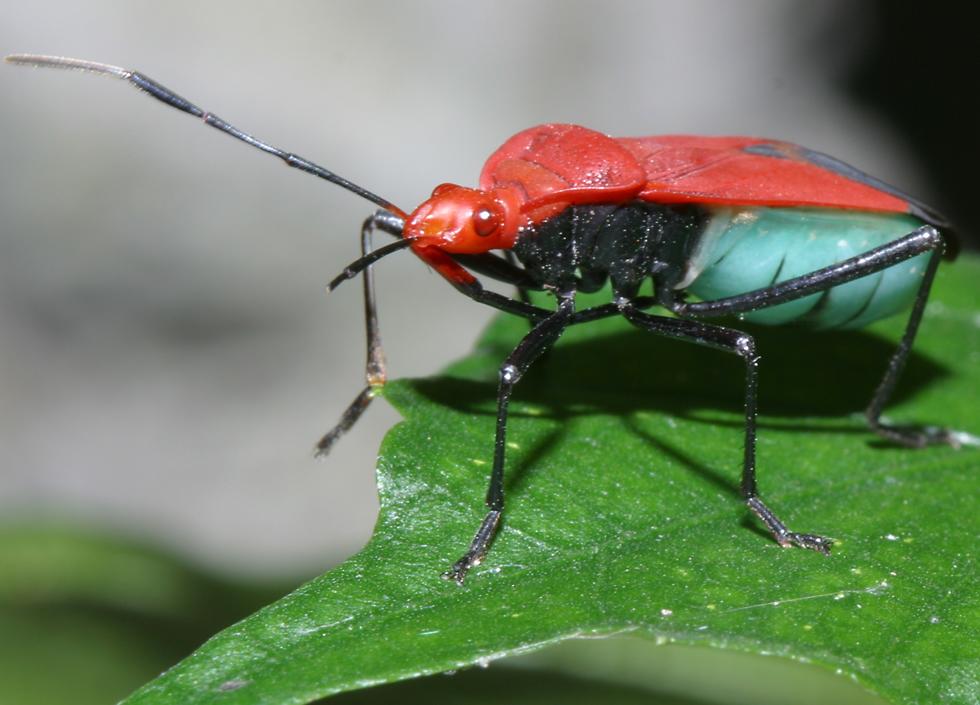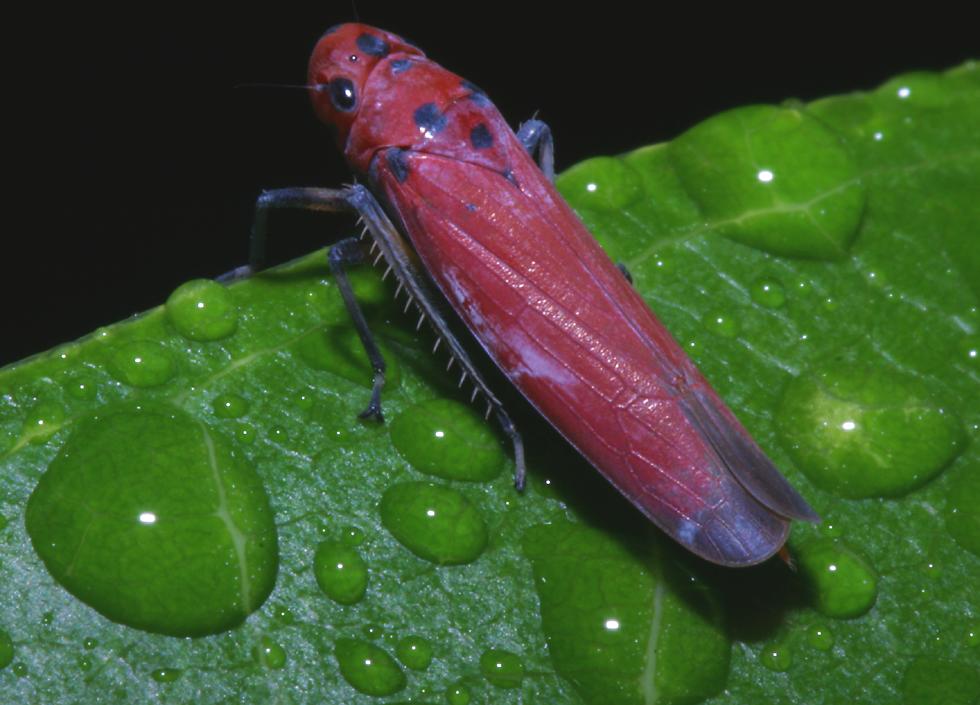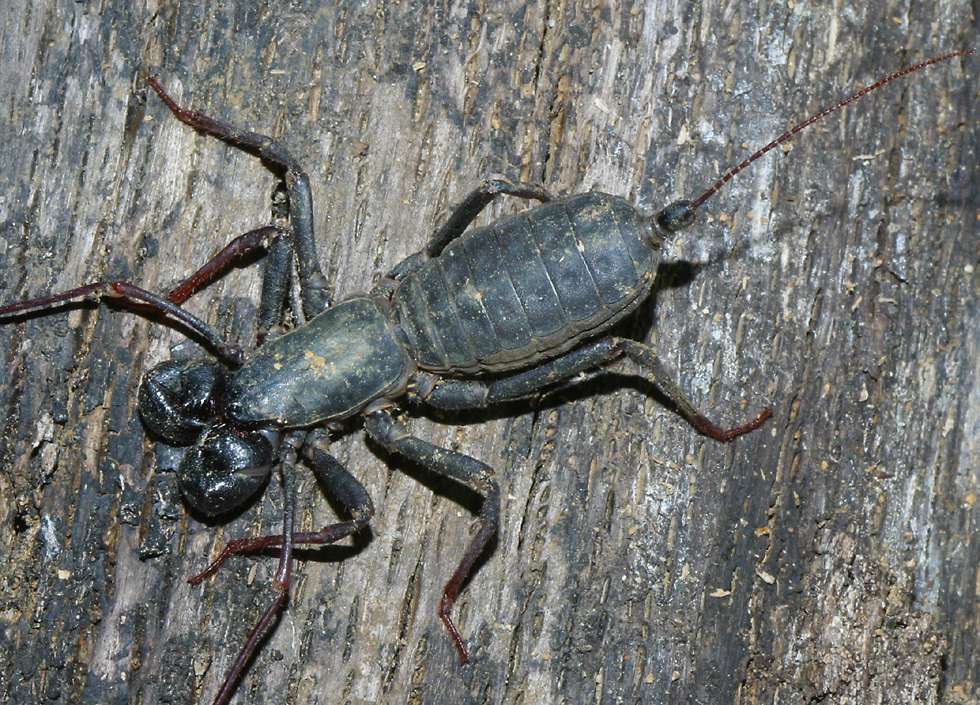Bugs of Vietnam
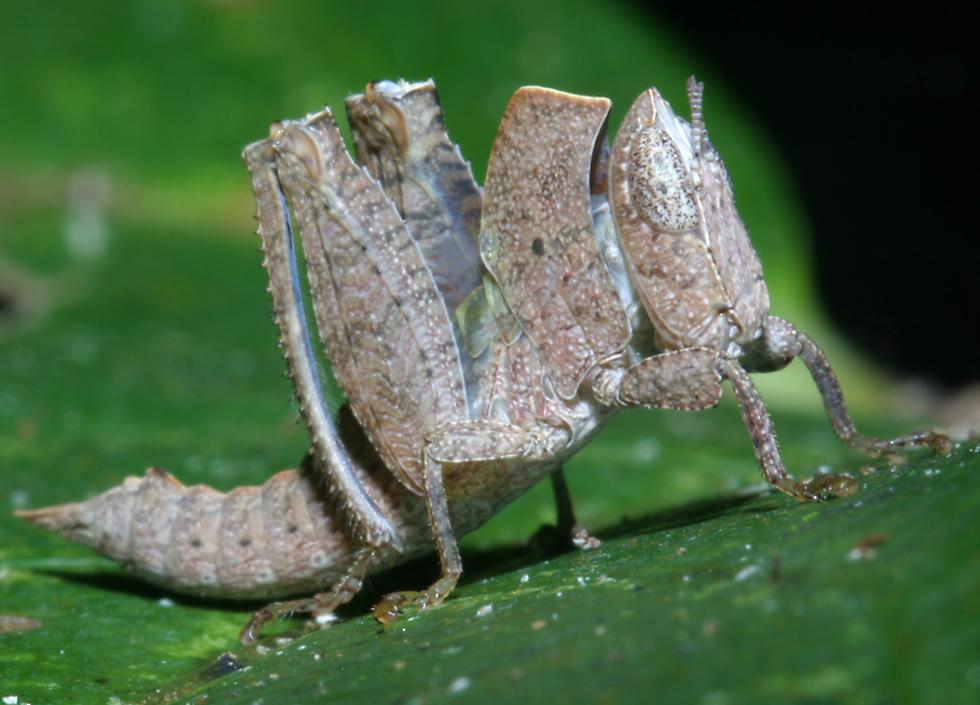
The bugs come weird and wonderful in Vietnam! This strange looking grasshopper was in Cat Tien national park, north of Saigon, where I spent two days and two nights. I'm not sure if the shields on its shoulders are meant to break up its appearance to camouflage it, or if they just make it harder to swallow. |
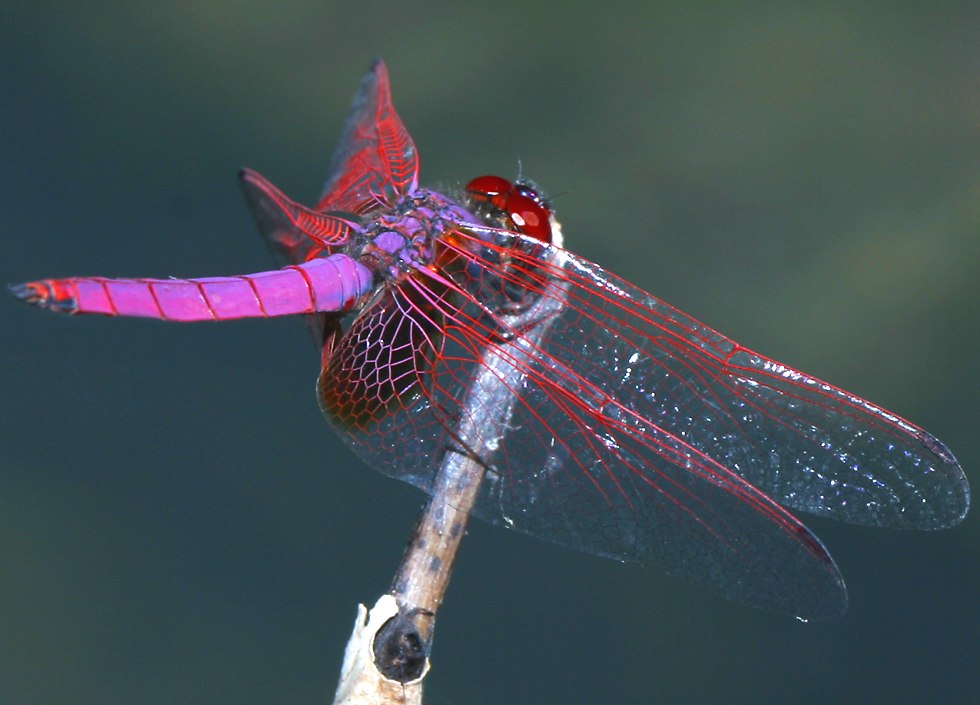
This male dawn dropwing dragonfly was near the stream at the south end of Jungle Beach, where several different species of dragonflies and their cousins the damselflies were going about their business. You can see a male dawn dropwing in Cambodia viewed from the front. |
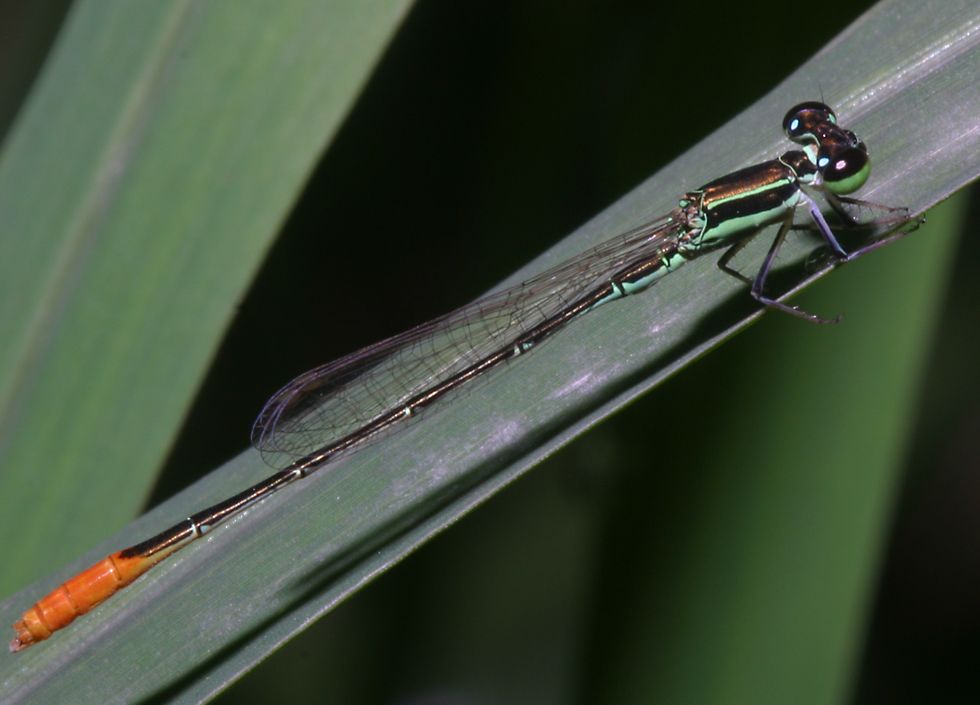
A nice damselfly amongst the tall grass in Cat Tien national park. |
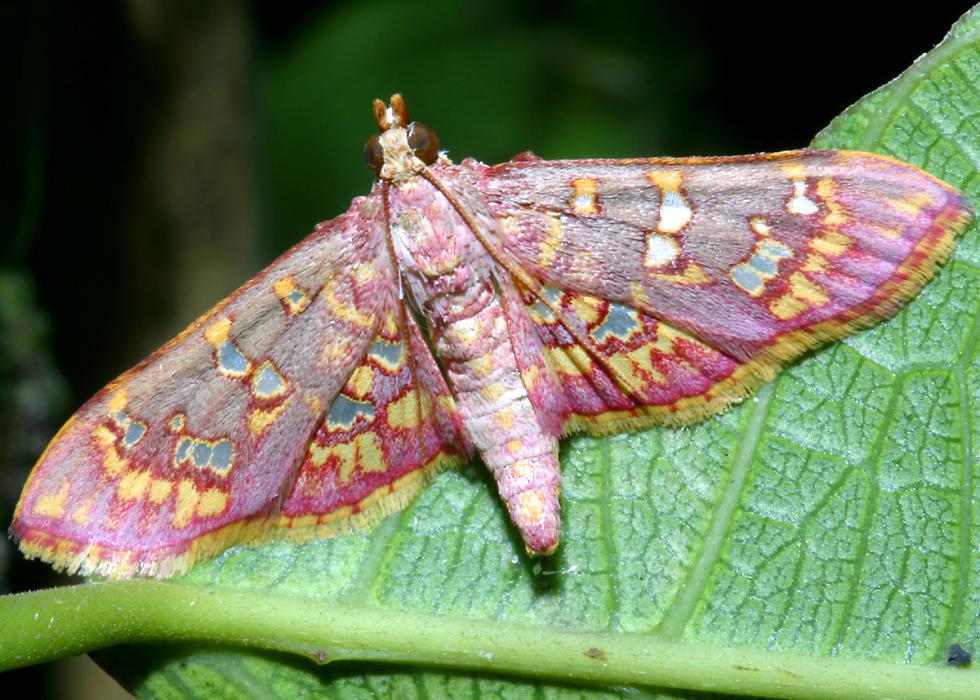
Talking about grass, here's a grass moth called Ischnurges gratiosalis. It's in very good condition, which probably means that it has only recently emerged from its chrysalis. It's really a very attractive creature, with delicate pink and yellow coloration on its wings and on its body, translucent windows on its wings, large scales which look like feathers on its shoulders and more large scales forming fringes on the rear edge of its wings. With so many interesting and attractive moths, I couldn't find space on this page for butterflies, so I put together a separate page of Butterflies of Vietnam. |
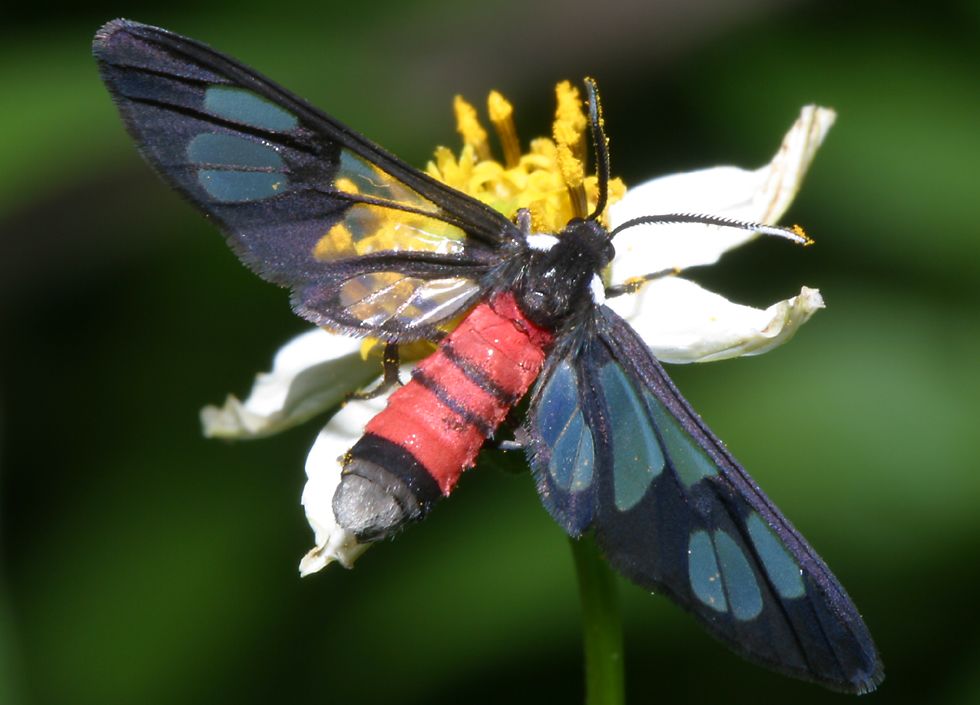
This moth has clear wings, but it's not a clearwing moth! True clearwing moths have a narrower body and look more like hornets, like this clearwing moth in Thailand. Instead it's a tiger moth flying during the daytime on the path up to the Perfume Pagoda, not far out of Hanoi. The colorful body and the fact that it's active in the daytime both suggest that it's toxic, or mimicking something toxic. Quite a few tiger moths have clearwings, like this pair of mating tiger moths in Australia. They can be difficult to identify, sometimes it's necessary to look at the number and shape of the clear windows on the wings. |
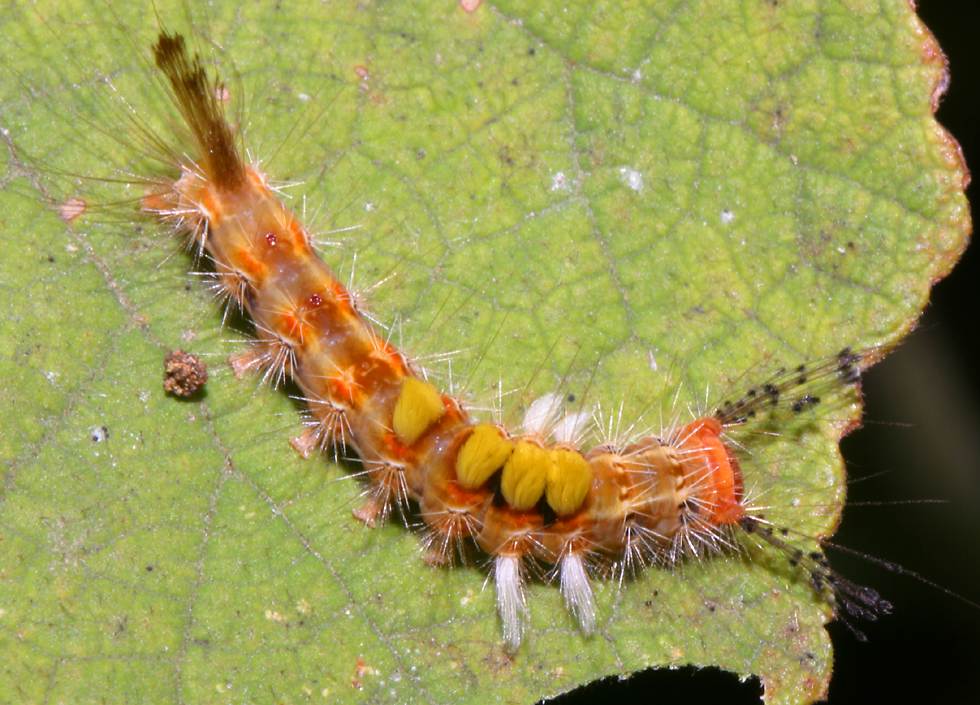
This is a painted pine moth caterpillar, also called a cocoa tussock moth or white-spotted tussock moth. Just as sphinx moth caterpillars can be recognized by their tail, so tussock moth caterpillars can be recognized by the tufts of hair on their back, in this case an attractive yellow color. If you look at the body segments near its tail, you'll see that two have bright red knobs like little light-emitting diodes. This reminded me of a white-marked tussock moth caterpillar I photographed in Illinois, and it turns out that both of them do indeed belong to the same genus even though they live on different continents! |
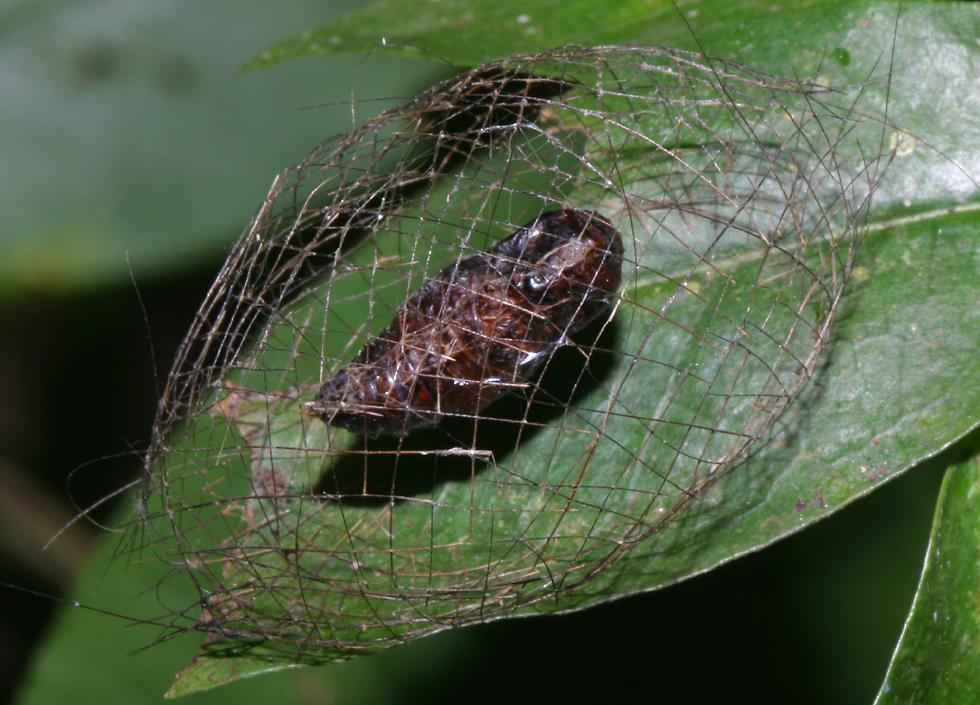
Caterpillars can be very beautiful, and there are some attractive chrysalises around, too. I wouldn't call this ordinary brown chrysalis attractive, but it's hard to deny that it's interesting! The caterpillar has selected a very open location on top of a leaf in Cuc Phuong national park to build its cocoon, but before pupating it has built an extraordinary cage around itself to keep predators away while it undergoes metamorphosis. |
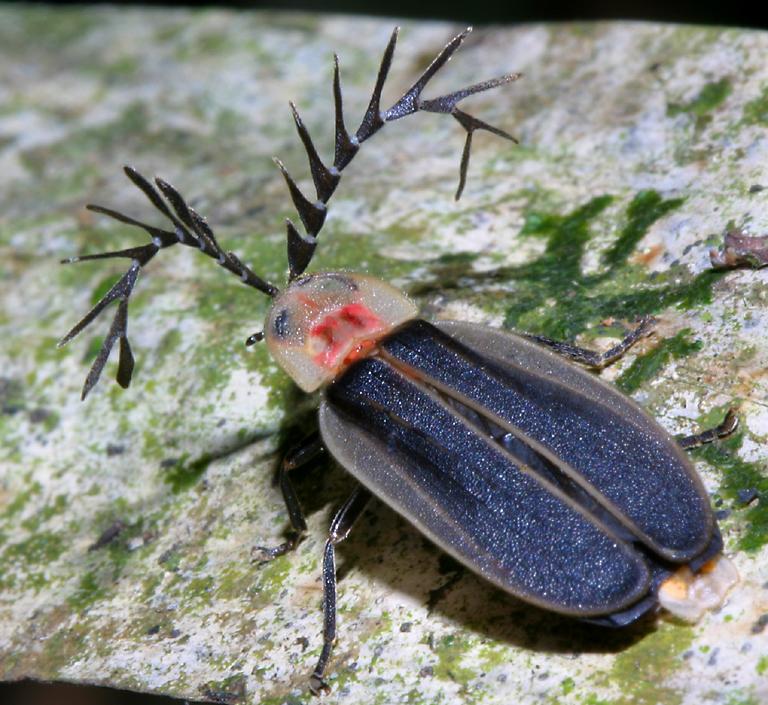
A firefly on a very beaten up leaf in Cuc Phuong national park. |
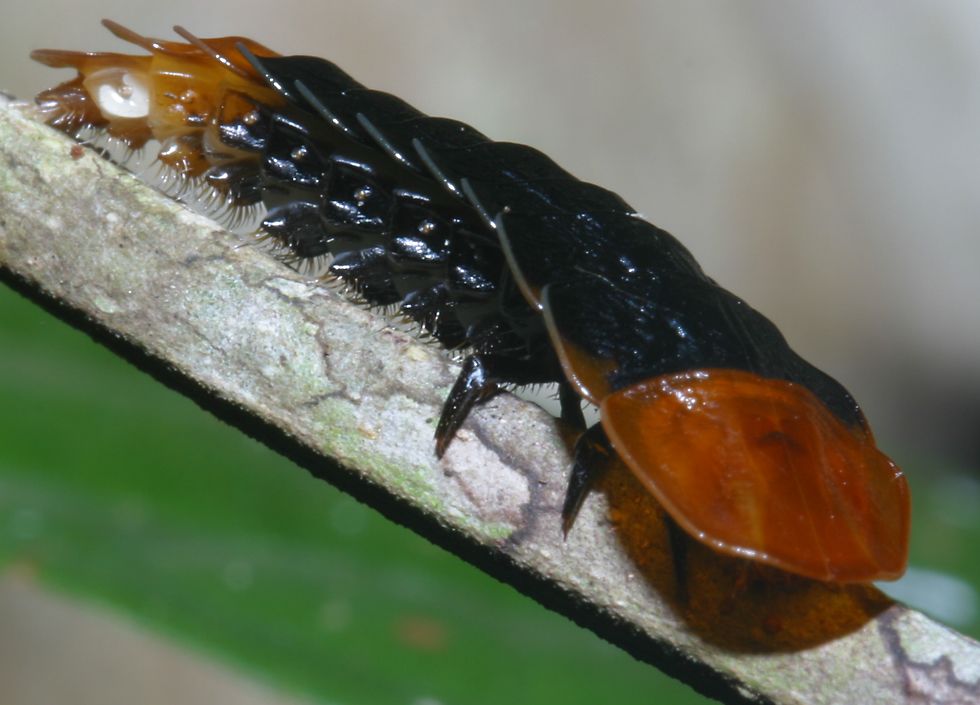
This extraordinary creature was wandering around at night in the trees at Cat Tien. I thought it was a firefly larva, but it's actually the female of a net-winged beetle in the genus Duliticola. They're sometimes called "trilobite larvae" because the plates on their back make them resemble the much larger trilobites found as fossils. You can see a similarly weird but non-glowing Duliticola net-winged beetle larva in Malaysia. Like fireflies they have light emitting organs under the tail - the comma shaped bright area which is clearly visible even in this photo taken using flash. Unlike fireflies, the light which is emitted is constant rather than flashing, and it was this peculiar light which I first noticed, moving in a most unfirefly-like way, because this critter was walking on the trees rather than flying. Maybe I should say that it was dragging itself, because all six of its legs are at the front, and it only has bristle-tipped stumps along the rest of its body. They hunt during the early part of the night and eat a variety of food, but particularly favor snails. Amazingly, the females never leave this larval form but the males, which are only one tenth the size, go through a partial metamorphosis and end up as ordinary looking beetles. When a female is ready to mate she climbs a tree, lights up and waits for a male to come to her - just like in a human singles bar, except for the bit about climbing a tree! |
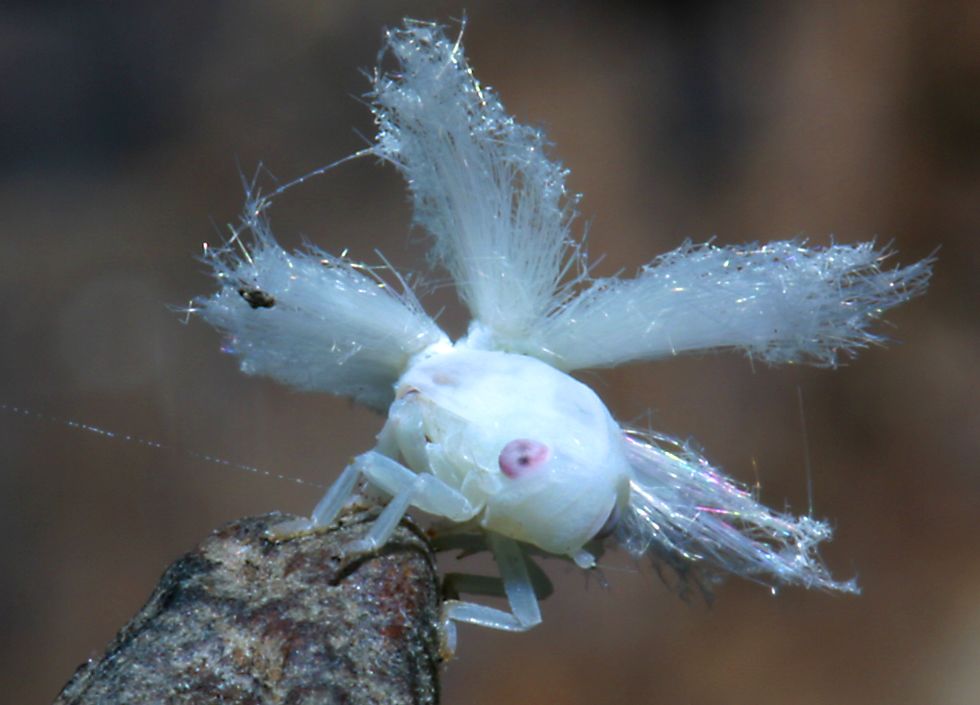
This juvenile planthopper looks much less like a beetle. The extraordinary shapes at the back of this insect are fibers which are extruded from organs at the tail. Perhaps they're intended to keep predators at bay, but they're obviously not entirely effective, because you can see another insect of this kind which is being eaten by a damselfly in Cambodia. |

Here's another type of arachnid, this one's a harvestman, which many people mistake for a spider. However harvestmen don't spin silk, they're not venomous and the males have penises, something spiders lack. And if you're wondering where all of the spider photos are, there were too many good ones to put on this page, so I put together a separate page of spiders of Vietnam, which includes a tarantula on the attack, an ant mimic, a spitting spider, some attractive jumping spiders and a weird triangular spider with a clear window on its abdomen through which you can see its eggs. |
